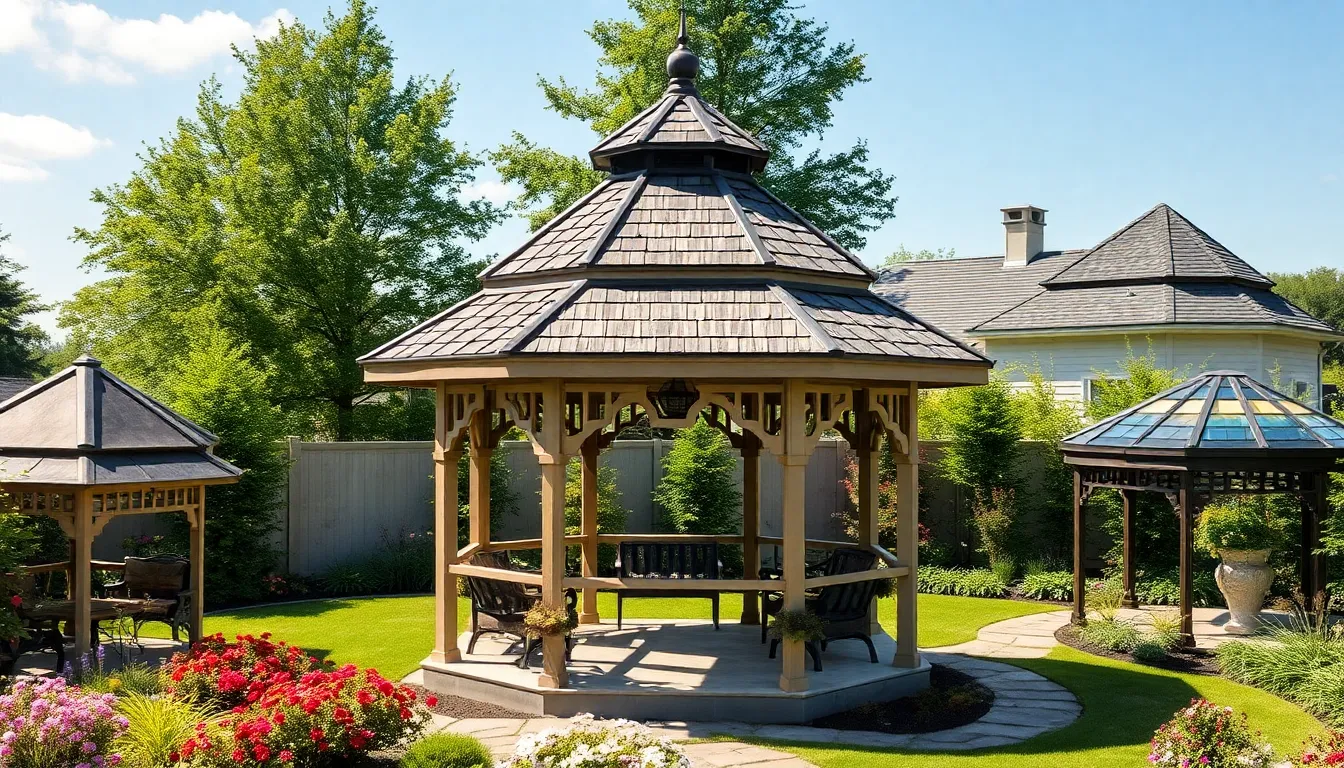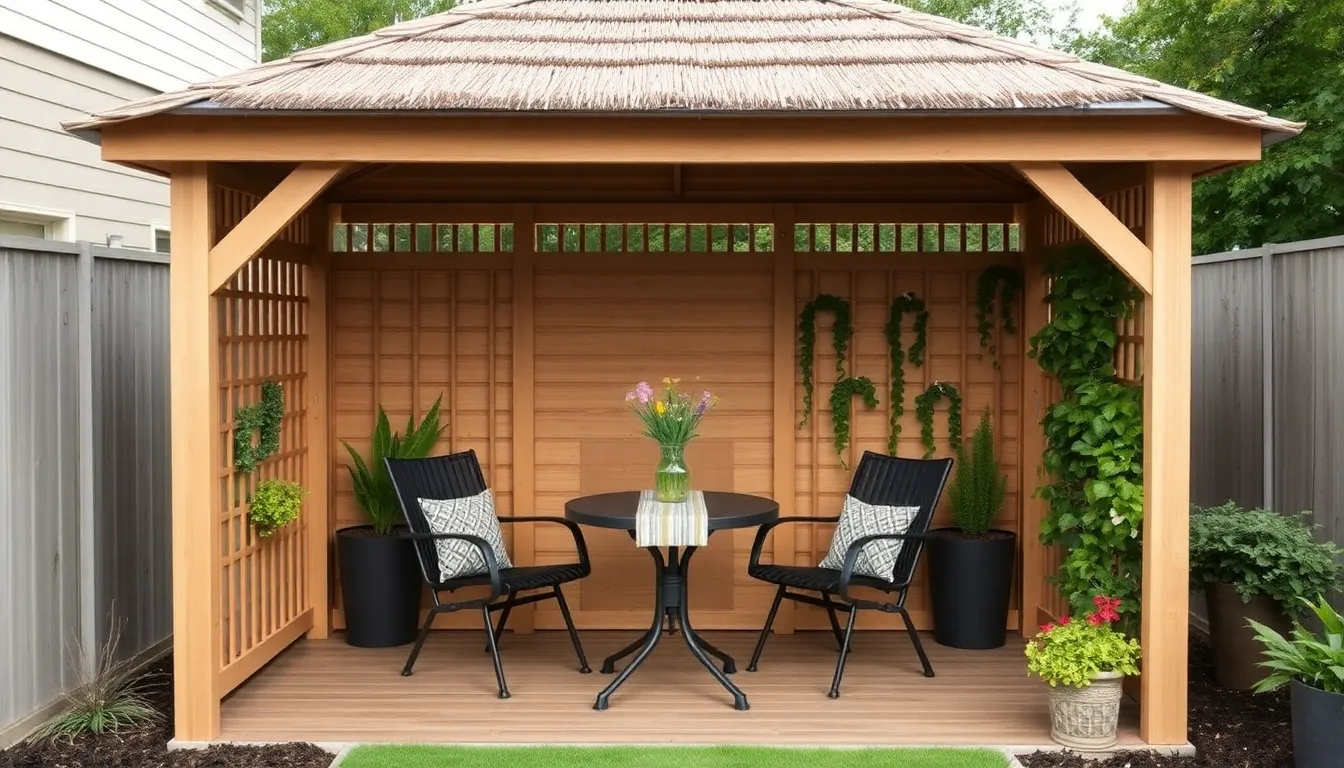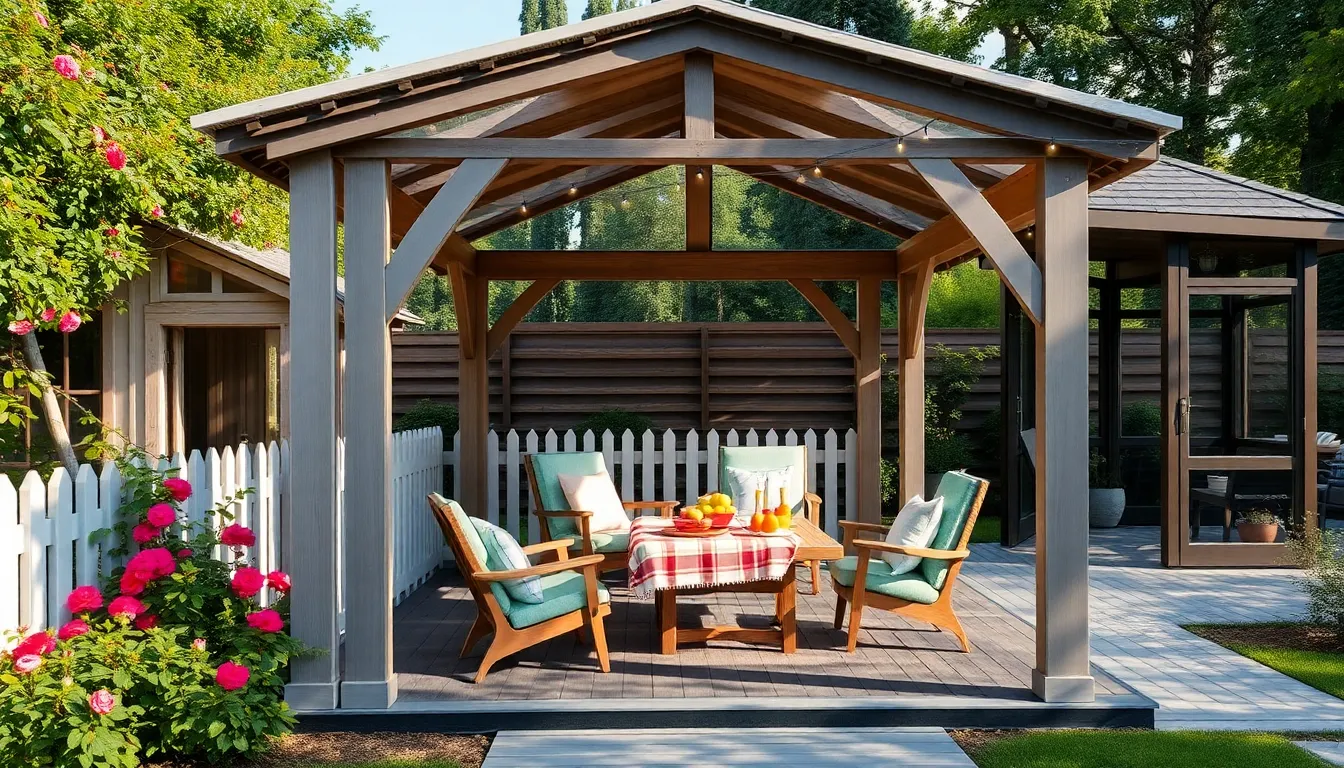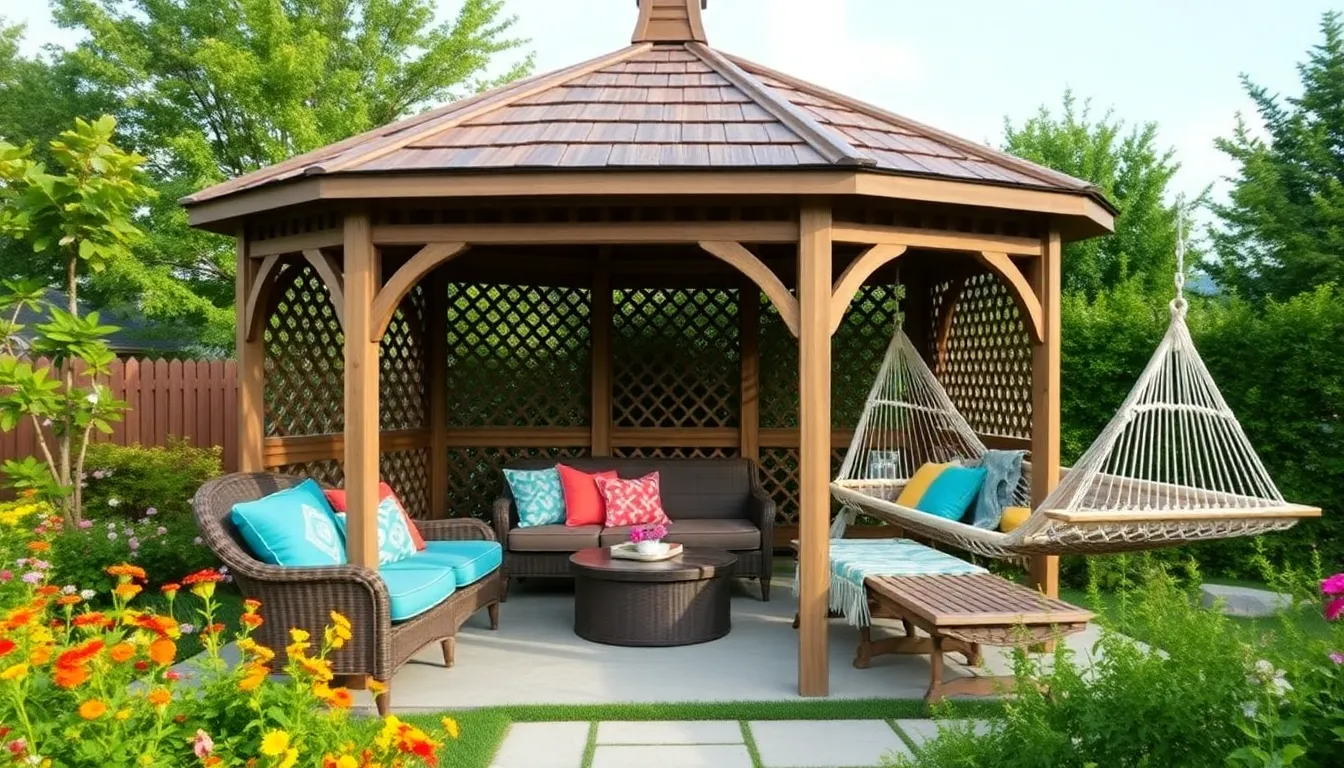Transforming your backyard into a personal oasis starts with choosing the right gazebo roof design. Whether you’re a seasoned DIY enthusiast or just embarking on your first outdoor project, selecting a creative roof style can elevate your space, offering both aesthetic charm and practical shelter. In our exploration of “12 Creative Gazebo Roof Designs,” we delve into diverse styles that cater to various tastes and needs, ensuring that every homeowner finds inspiration to enhance their outdoor haven.
Dive into a world of possibilities as we guide you through designs ranging from classic to contemporary, each with its own unique flair and functionality. You’ll discover insights into materials, structural benefits, and design tips that make these roofs not just a cover but a statement piece for your outdoors. Embrace the joy of crafting an inviting retreat right in your backyard, where style meets versatility in the most delightful ways.
Exploring Classic Shingle Roof Styles
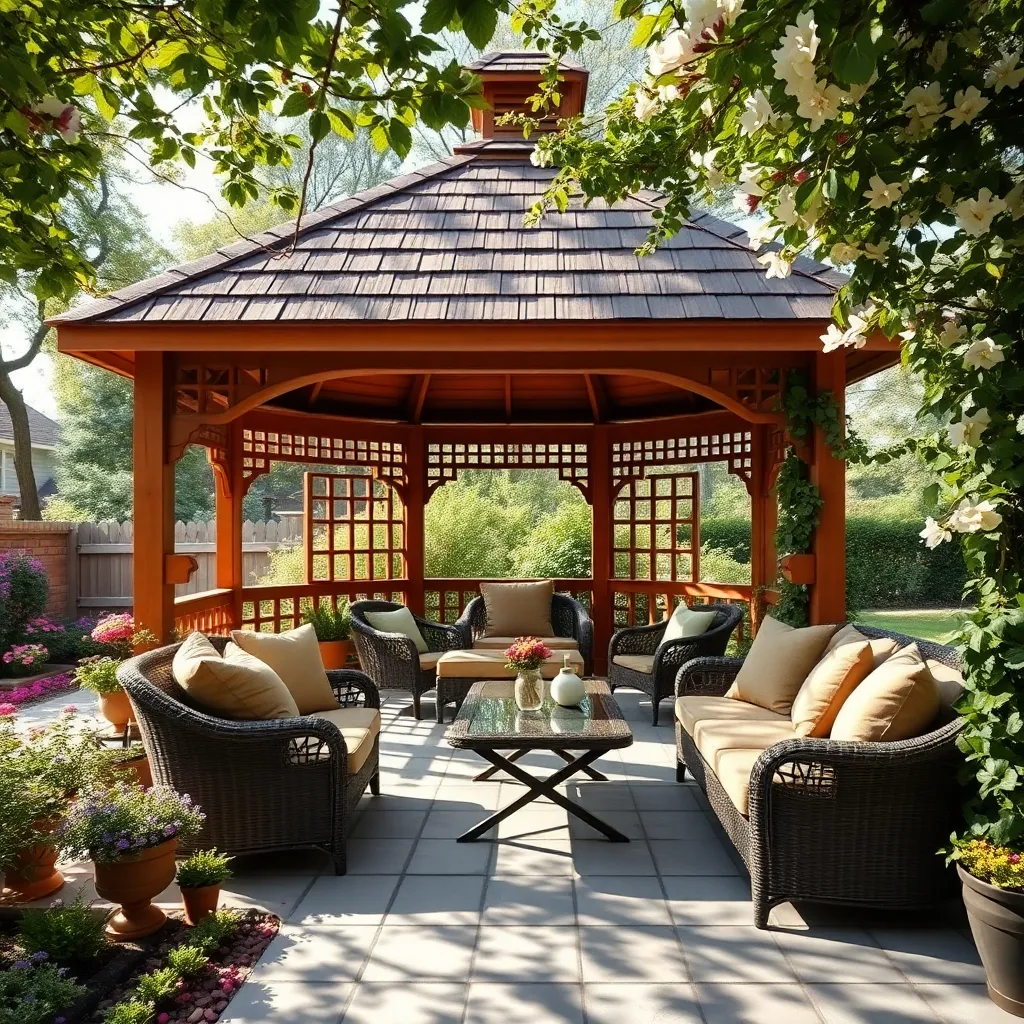
When exploring classic shingle roof styles for your gazebo, consider using **asphalt shingles**, a popular choice due to their affordability and ease of installation. These shingles come in a variety of colors, allowing you to match your gazebo to your home or garden decor. For a more traditional look, opt for **wood shingles**, which offer a rustic charm and blend beautifully with natural settings; just ensure they are treated to resist rot and insects.
To enhance durability and longevity, install a layer of **roofing felt** beneath your shingles; this acts as a barrier against moisture and enhances insulation. If you’re looking for a more advanced approach, consider **architectural shingles**—they provide greater texture and depth, adding visual interest and potentially increasing your property’s value. For DIY enthusiasts, remember to use a **roofing nailer** to secure shingles tightly, ensuring they withstand various weather conditions.
Modern Metal Roof Designs Unveiled

Metal roofs have become a popular choice for gazebos due to their durability and modern appeal. When considering a metal roof for your gazebo, opt for materials like galvanized steel or aluminum, which offer excellent weather resistance and longevity. For a sleek, contemporary look, consider a standing seam design, which features raised seams that effectively channel water away. Ensure proper insulation beneath the metal to minimize noise during rain and maintain a comfortable temperature inside.
Incorporating color and finish can transform a metal roof into a stunning focal point. Choose from a variety of finishes, such as matte or metallic, to match your outdoor aesthetic. For added flair, consider integrating skylights or solar panels within the roof design, providing both natural light and energy efficiency. Advanced builders might explore customized trims or edge treatments to give the gazebo a polished, unique look. By carefully selecting materials and design elements, you can create a modern, functional, and visually appealing outdoor shelter.
Rustic Charm of Wooden Shakes
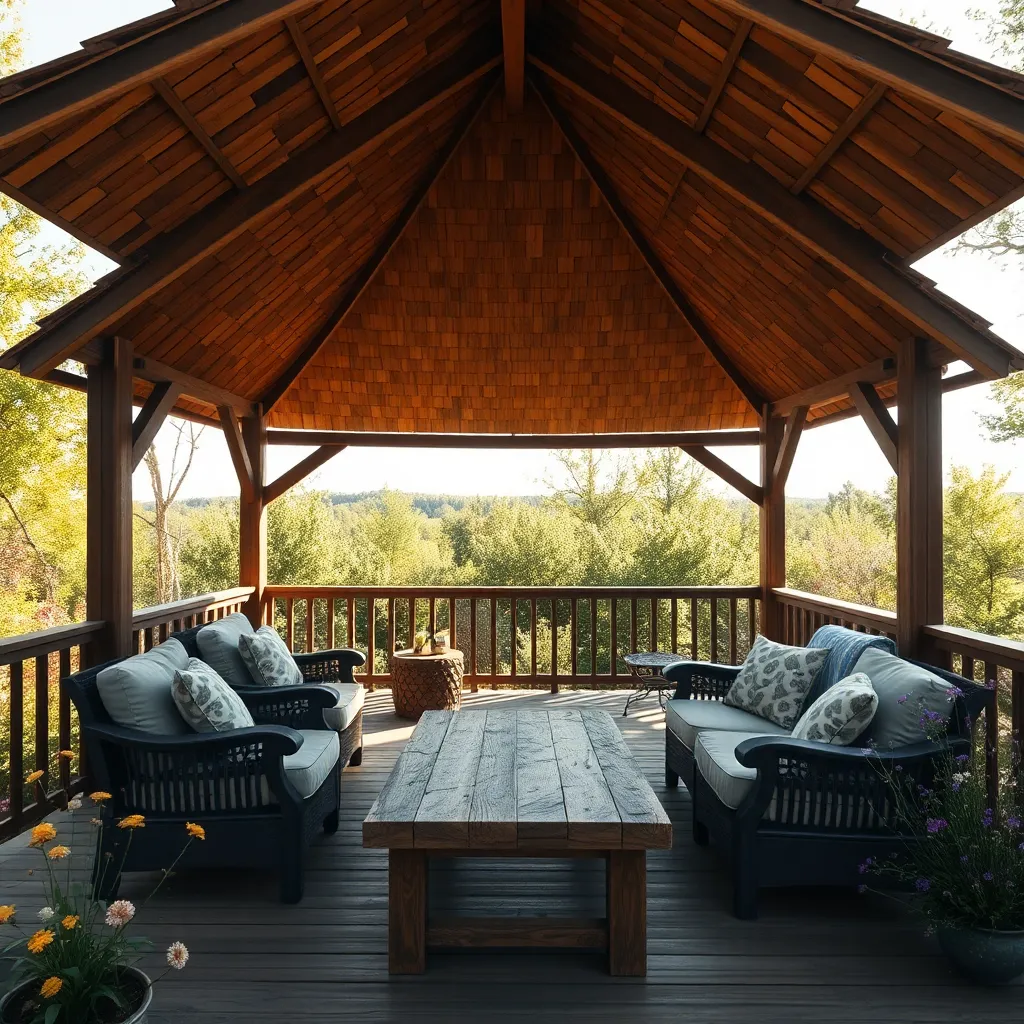
Wooden shakes bring a timeless, rustic charm to any gazebo, offering both aesthetic appeal and durability. For beginners, choosing cedar shakes is a practical option due to their natural resistance to rot and insects. Ensure that shakes are properly spaced to allow for expansion and contraction with weather changes. For a more polished look, consider using a combination of wood stains to enhance the natural grain and color variations.
When installing wooden shakes, it’s essential to use galvanized or stainless steel nails to prevent rust, ensuring longevity. Advanced enthusiasts might explore adding a protective underlayment to improve insulation and weatherproofing. To maximize the rustic appeal, incorporate exposed wooden beams and consider adding decorative elements like carved wooden trusses. These enhancements not only add structural interest but also boost the overall aesthetic appeal of your outdoor shelter.
Eco-Friendly Living Roof Innovations
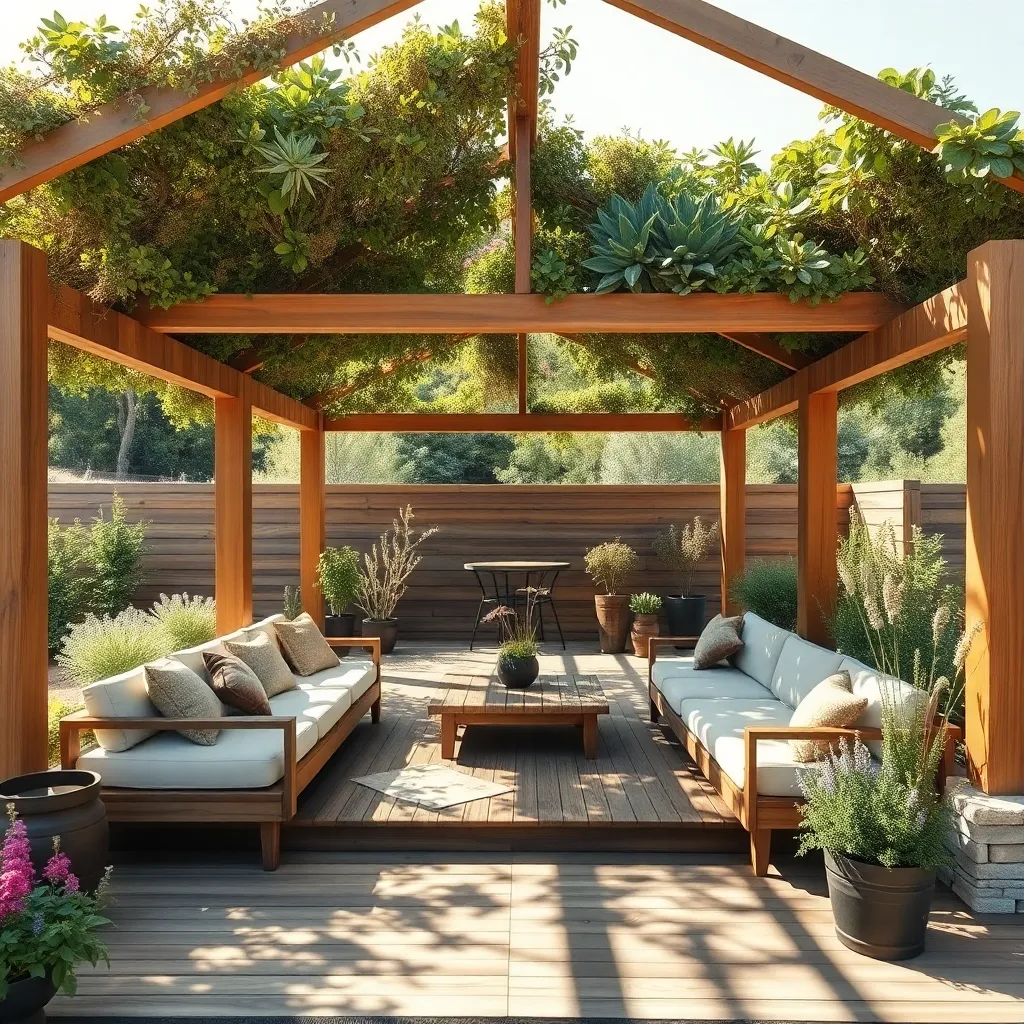
Transforming your gazebo with a living roof not only enhances its aesthetic appeal but also contributes to environmental sustainability. Start by selecting a lightweight substrate mix designed for green roofs—typically a blend of recycled materials and organic components. This ensures proper drainage and supports plant growth without adding excessive weight. For beginners, opting for hardy, low-maintenance plants like sedums or succulents is wise due to their resilience and minimal soil depth requirements.
To build a successful living roof, incorporate a sturdy waterproof membrane to protect the structure from moisture damage. More advanced gardeners can experiment with a variety of plants to create a biodiverse mini-ecosystem. Ensure proper irrigation by integrating a drip system, especially in drier climates. Regular maintenance is crucial; inspect the plant health and roof integrity seasonally to keep your living roof in top condition. By embracing this eco-friendly innovation, you’re not only creating a beautiful retreat but also helping to reduce urban heat and improve air quality.
Elegant Slate Roof Patterns

Slate roofs provide a classic and elegant touch to any gazebo, combining durability with aesthetic charm. When planning your slate roof pattern, consider using a combination of sizes and shapes to create a visually appealing design. Standard slate tiles typically measure 12″x24″, but experimenting with smaller pieces can add intricate detail. For a beginner-friendly approach, start with a simple diamond or staggered pattern, which not only looks sophisticated but also facilitates effective water runoff.
For those looking to add a unique flair, incorporate varied colors and textures to enhance the visual interest of your gazebo. Advanced gardeners may appreciate the challenge of a herringbone or fish-scale pattern, which requires precision but offers a stunning finish. Ensure your roof structure can support the weight of slate, as it is heavier than other materials. Use galvanized nails or copper fasteners to secure the tiles, ensuring a long-lasting and weather-resistant installation. With careful planning and execution, your slate roof will be a standout feature in any outdoor setting.
Maximizing Light with Glass Roofing
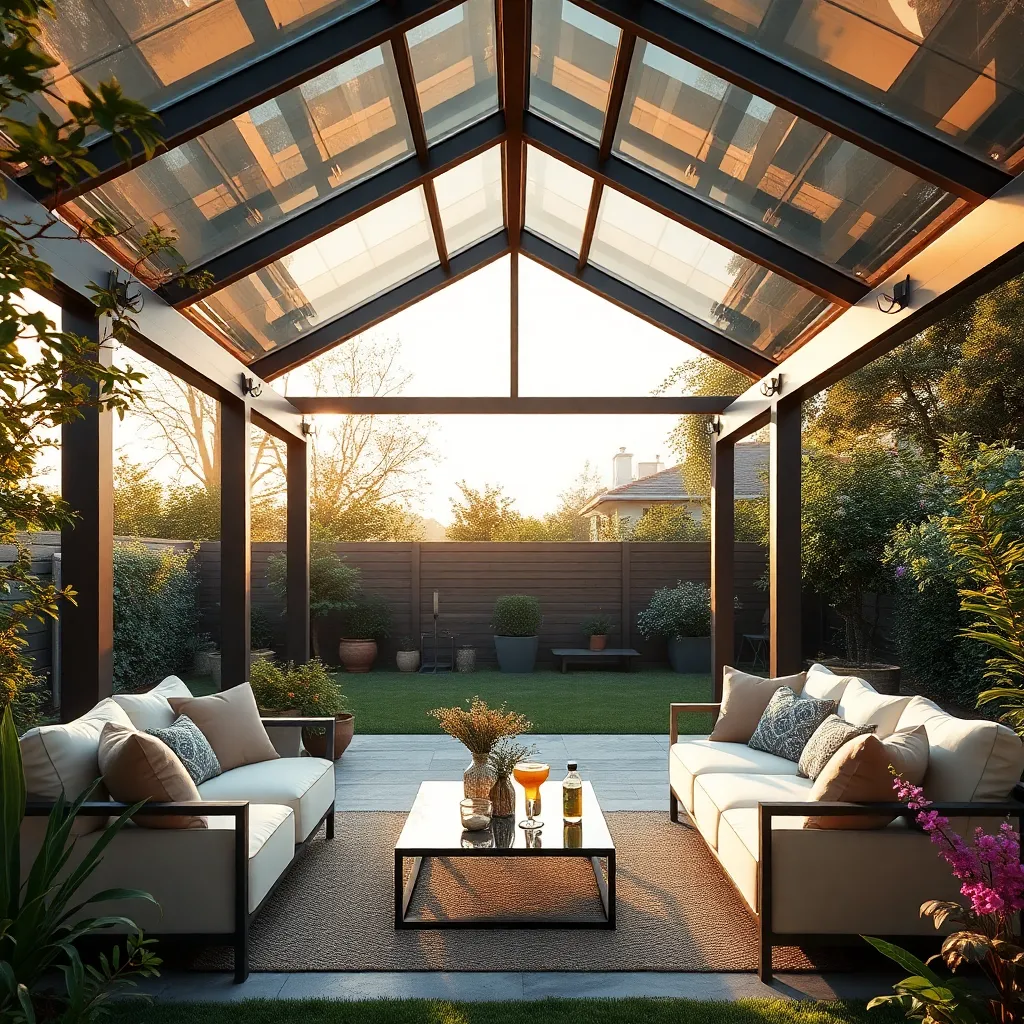
Glass roofing is an excellent choice for maximizing light in your gazebo, creating a bright and inviting space for any time of the day. To begin, consider using tempered glass panels, which are both durable and safe for outdoor use. Ensure the glass is UV-resistant to protect against sun damage over time. For an elegant touch, frame the glass with powder-coated aluminum or treated wood, providing both support and aesthetic appeal. Beginners can start with a basic rectangular design, while more experienced builders may explore custom shapes to fit unique garden layouts.
Incorporating glass roofing requires strategic planning to optimize both light and thermal comfort. Position your gazebo in a spot that benefits from morning sun but is sheltered from harsh afternoon rays. For added versatility, consider installing retractable shades or curtains that allow you to control the amount of sunlight entering the space. Ensure proper sealing around the edges to prevent leaks, and maintain the glass with regular cleaning to keep your gazebo looking its best. By following these tips, you can create a stunning and functional outdoor retreat.
Unique Geometric Roof Structures
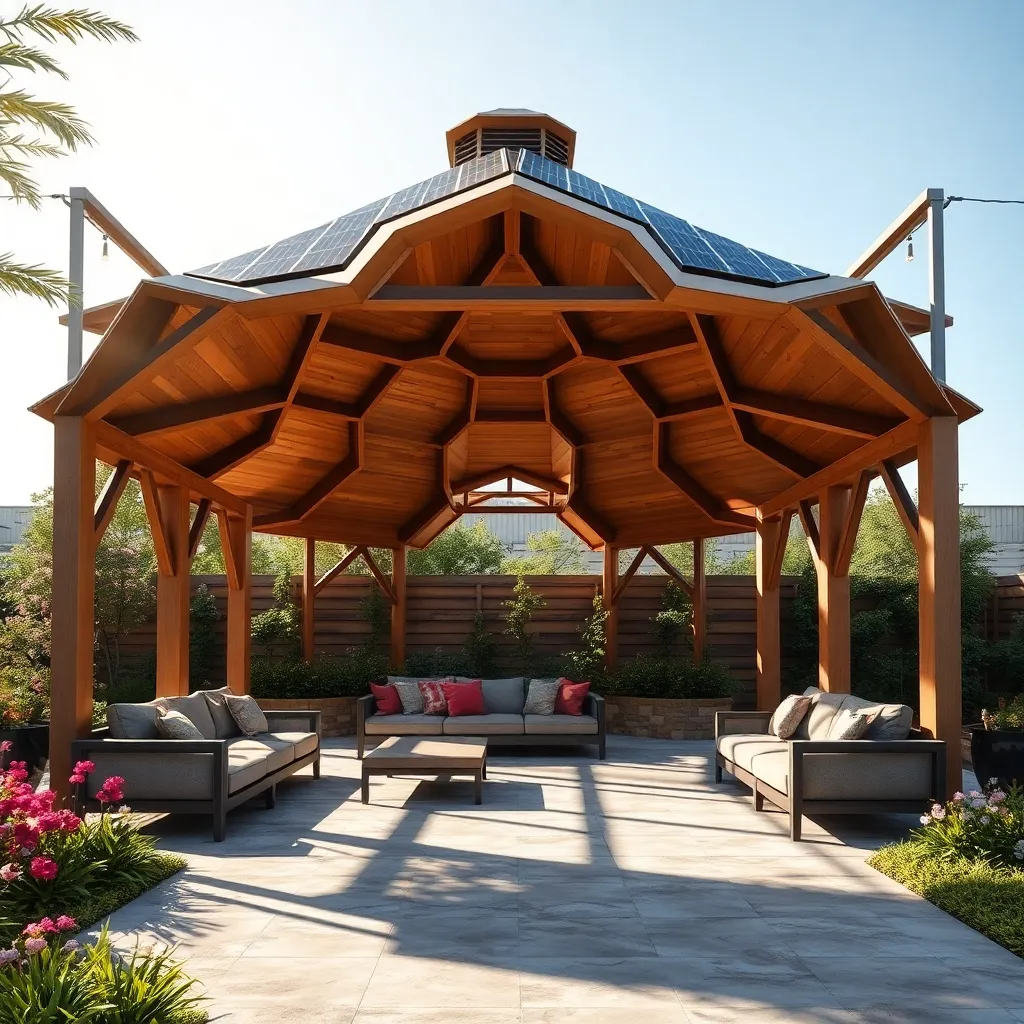
Unique geometric roof structures can transform a standard gazebo into a standout architectural feature in your garden. Consider incorporating angular shapes like triangles or hexagons, which not only add visual interest but also enhance structural stability. Use materials like metal or treated wood for these intricate designs to ensure durability and weather resistance. Beginners can start with simple angles, while experienced builders might explore complex polyhedral forms for a truly unique touch.
When constructing these geometric designs, it’s essential to plan each angle precisely to achieve a seamless fit. Measure twice and cut once is the golden rule to avoid costly errors. You can use CAD software to sketch your design and calculate dimensions accurately. For a polished finish, consider adding a clear sealant to protect the wood or a powder-coated finish for metal structures. These steps will ensure your gazebo is both beautiful and long-lasting, offering a unique space for relaxation and entertainment.
Colorful Tiled Roof Creations
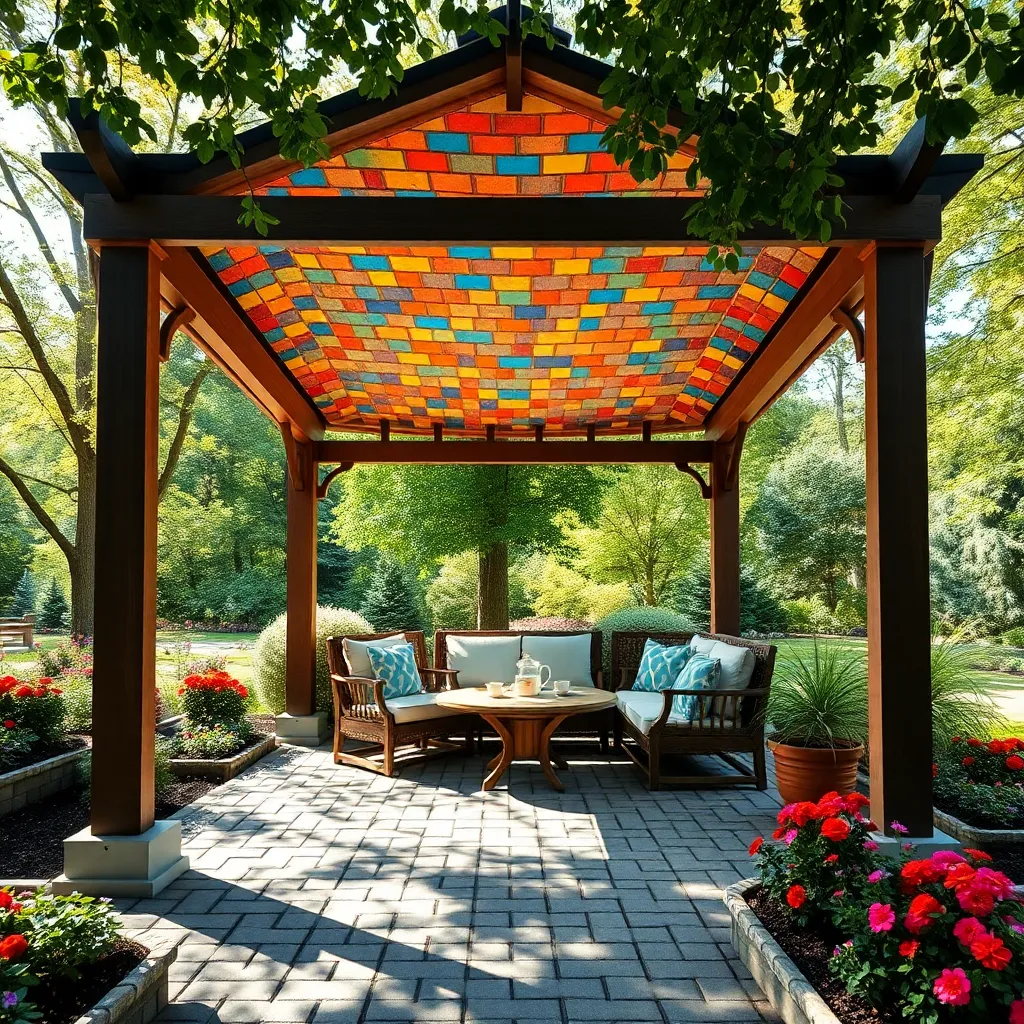
Adding a colorful tiled roof to your gazebo can transform it into a vibrant focal point in your garden. For beginners, consider using glazed ceramic tiles that are not only weather-resistant but also available in a wide array of colors and patterns. Ensure tiles are rated for outdoor use to withstand the elements. An overlap of at least 1-2 inches is recommended to allow for expansion and contraction with temperature changes, preventing cracks.
For those looking to add a personal touch, mosaic tile designs can elevate your gazebo roof with intricate patterns. Experienced DIY enthusiasts might opt for a custom tile layout, incorporating various shapes and hues to reflect personal style. Use a high-quality waterproof adhesive to secure tiles and a grout that matches the tiles’ durability. Remember to seal the grout regularly to prevent moisture buildup, ensuring your colorful creation remains stunning for years to come.
Low-Maintenance Vinyl Roof Options
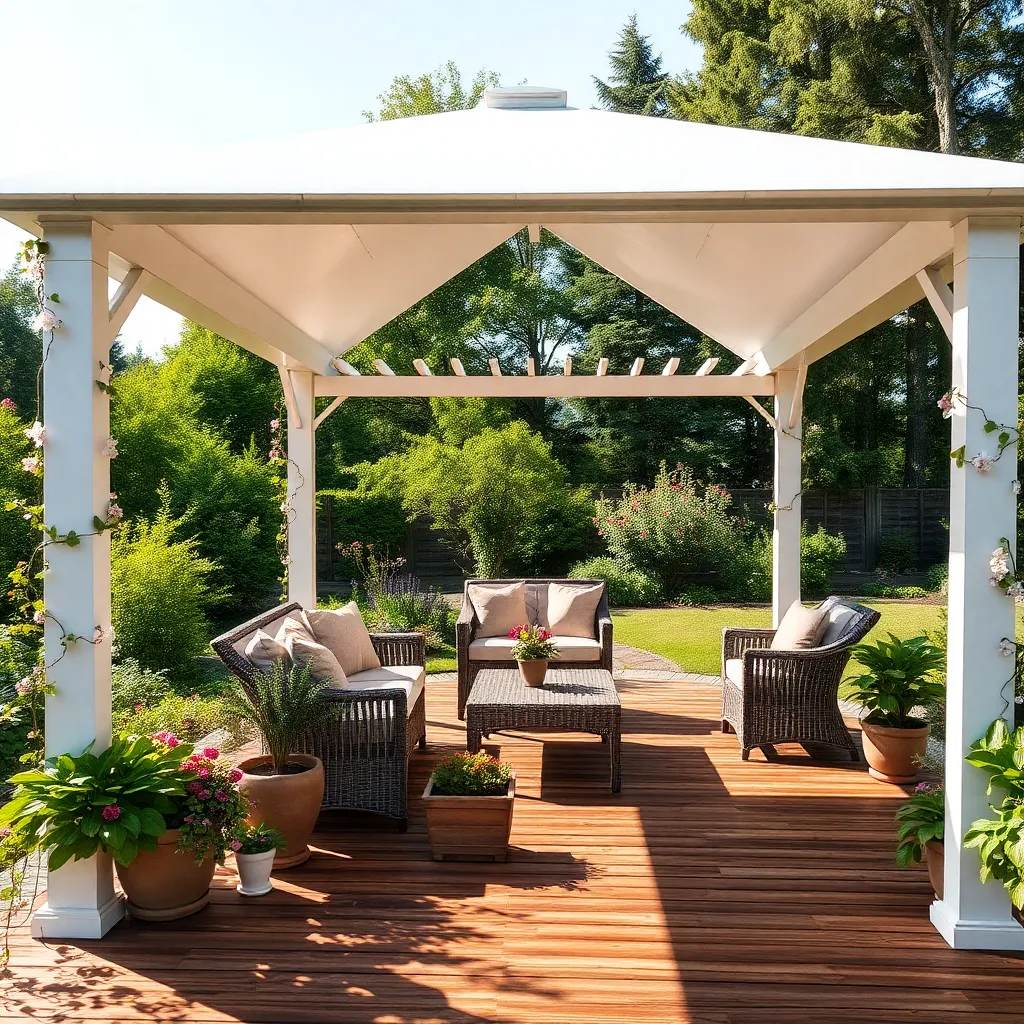
Vinyl roofs offer an excellent low-maintenance option for your gazebo, combining durability with ease of care. Vinyl roofing is resistant to mold, mildew, and insects, making it ideal for outdoor settings. For a straightforward installation, consider using interlocking vinyl panels, which are lightweight and can be easily snapped together. This not only expedites the construction process but also ensures a watertight seal, protecting your outdoor space from the elements.
When selecting vinyl for your gazebo roof, opt for UV-resistant materials to prevent fading and maintain the roof’s aesthetic appeal over time. Choose between a variety of colors and textures to complement your garden’s design, from classic white to more natural wood-look finishes. For those looking to add a touch of sophistication, consider incorporating a gentle slope in the roof design to facilitate rainwater runoff, enhancing both functionality and style. With minimal maintenance requirements, vinyl roofs provide a practical and attractive solution for homeowners seeking a hassle-free outdoor retreat.
Decorative Thatched Roof Ideas

Transform your gazebo with a decorative thatched roof for a touch of rustic charm and natural beauty. Using materials like palm leaves, reeds, or straw, a thatched roof not only offers a unique aesthetic but also provides excellent insulation. To achieve this look, consider sourcing local materials for authenticity and sustainability. Beginners might start with pre-made thatch panels for easier installation, while more seasoned DIY enthusiasts can weave their own thatch for a personalized touch.
For a professional finish, ensure the thatch is tightly packed to enhance durability and weather resistance. A slope of at least 30 degrees is recommended to allow for proper water runoff, preventing leaks and prolonging the life of the roof.
- Use galvanized steel for the framework to prevent rust.
- Secure the thatch with durable nylon netting or wire to withstand strong winds.
With these tips, you can create a cozy, inviting outdoor space that seamlessly blends with nature.
Weatherproofing with Polycarbonate Sheets
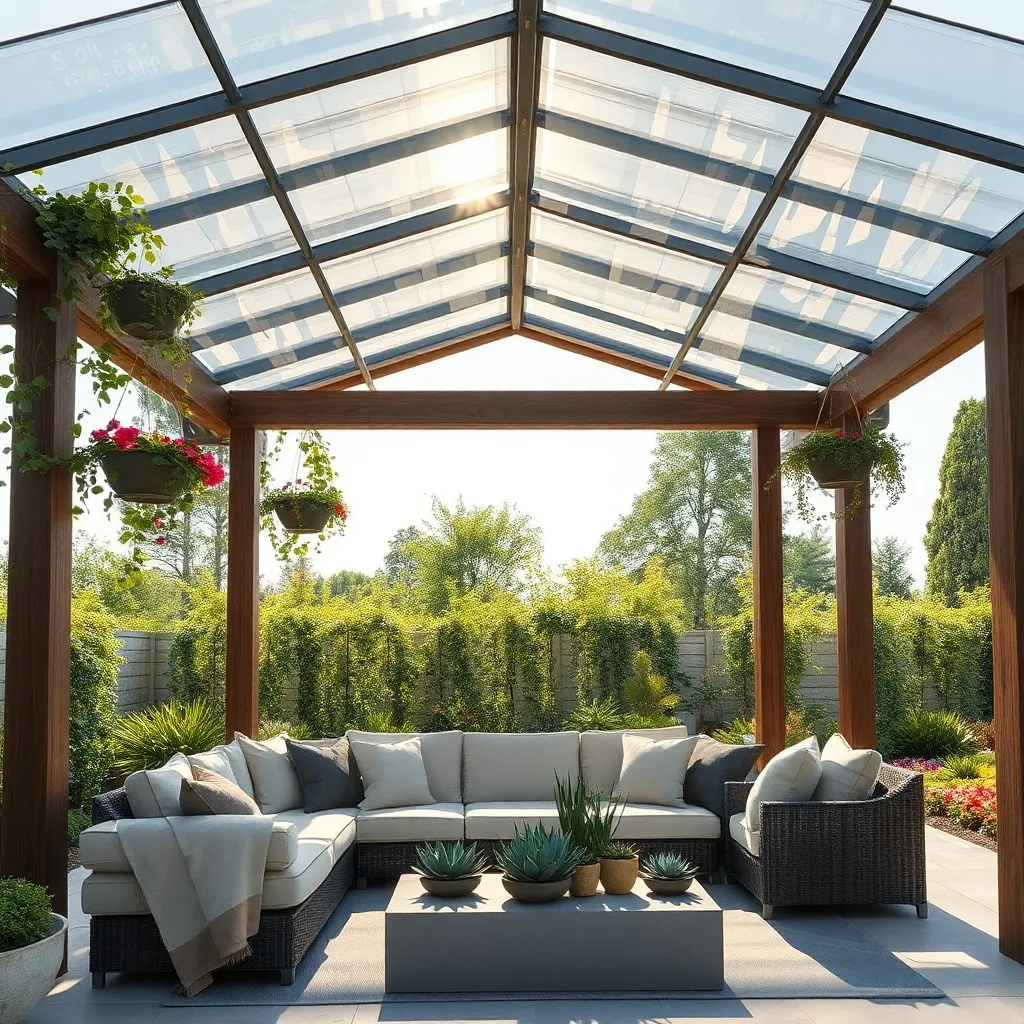
Polycarbonate sheets are an excellent choice for weatherproofing your gazebo, offering a strong, lightweight solution that protects against the elements. Known for their durability, these sheets are highly resistant to impact and can withstand harsh weather conditions, making them perfect for year-round use. For beginners, consider using clear or tinted polycarbonate sheets that allow natural light to filter through while also providing UV protection. Installing these sheets is relatively simple: cut them to fit your gazebo’s dimensions and secure them with screws and waterproof seals to prevent leaks.
For those looking to enhance their design, polycarbonate sheets offer flexibility in style and functionality. Advanced gardeners can experiment with a combination of colors and textures to create a visually appealing roof that complements their outdoor space. Ensure proper ventilation by leaving gaps or incorporating vents to prevent heat buildup under the sheets. Pro tip: Use sheets with a minimum thickness of 6mm for optimal insulation and longevity. This versatile material can be easily integrated into existing structures, making it a practical upgrade for any gazebo.
Integrating Solar Panels Seamlessly

Incorporating solar panels into your gazebo design is an excellent way to harness renewable energy while enjoying your outdoor space. Begin by considering the orientation and tilt of your roof; for optimal efficiency, panels should face true south and be angled between 15-40 degrees, depending on your geographic location. Using lightweight, durable materials like aluminum for your gazebo frame can help support the extra weight of solar panels without compromising structural integrity.
For seamless integration, opt for solar shingles or thin-film solar panels, which can blend more naturally with traditional roofing materials. These options are particularly suited for homeowners looking to maintain a cohesive aesthetic. Make sure to consult with a professional installer to ensure proper wiring and inverter placement, allowing for an efficient energy system. With these practical tips, you can enhance your gazebo’s functionality without sacrificing style.
Conclusion: Creating Beautiful Outdoor Spaces
In exploring ’12 Creative Gazebo Roof Designs,’ we’ve unveiled how each design metaphorically represents a key relationship concept: embracing flexibility, fostering communication, building trust, nurturing intimacy, celebrating uniqueness, adapting to change, creating shared goals, maintaining individuality, respecting boundaries, cultivating patience, managing conflicts, and cherishing memories. These concepts serve as the sturdy foundation and intricate framework of any successful relationship.
To immediately put these insights into action, choose one concept to focus on this week. Whether it’s improving communication or nurturing intimacy, take small, intentional steps to enhance that aspect of your relationship.
Remember, relationships are like gazebos—beautiful, multifaceted, and requiring regular care to maintain their strength and beauty. Bookmark this article now, so these timeless strategies are just a click away whenever you need a fresh perspective or gentle reminder.
Looking ahead, know that by investing time and effort into these key areas, you’re paving the way for a resilient and flourishing relationship. Embrace the journey with positivity and confidence, knowing that each step taken is a step towards lasting happiness and fulfillment.

